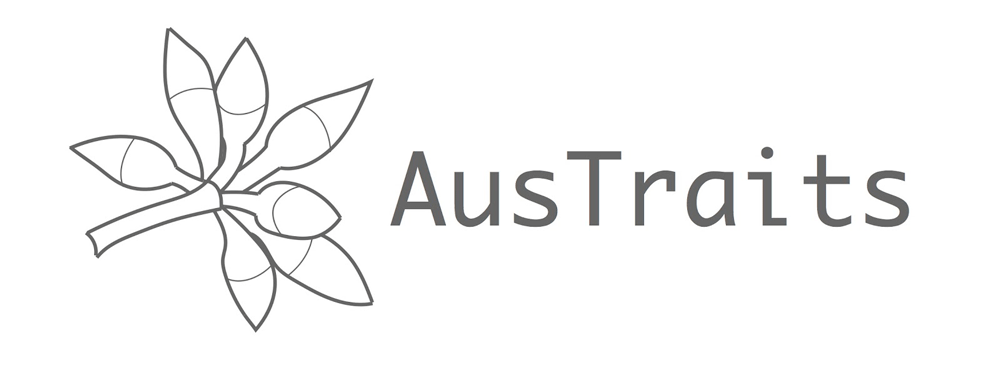Online Resources
Occurrence records map (0 records)
Datasets
datasets have provided data to the Atlas of Living Australia for this species.
Browse the list of datasets and find organisations you can join if you are interested in participating in a survey for species like Pittosporum angustifolium
Types
Specimens
Images
Misidentified

Names and sources
| Accepted Name | Source |
|---|---|
| Pittosporum angustifolium |
|
| According to:Council of Heads of Australasian Herbaria (2016), Australian Plant Census | |
| Published in:Loddiges, C., Loddiges, G. & Loddiges, W. (1832), The Botanical Cabinet [t. 1859] | |
| Synonym | Source |
|---|---|
| Pittosporum phylliraeoides var. microcarpa heterotypic orth. var. |
|
| Published in:Bennett, E.M. & George, A.S. in Jessop, J.P. (ed.) (1981), Pittosporaceae. Flora of Central Australia [124] | |
| Pittosporum phillyreoides var. microcarpa heterotypic |
|
| Published in:Moore, S. le M. (1 July 1899), The Botanical Results of a Journey into the Interior of Western Australia. Journal of the Linnean Society, Botany 34 [178] | |
| Pittosporum phillyreoides var. microcarpa heterotypic |
|
| Published in:Moore, S. le M. (May 1897), The camel-fodder plants of Western Australia. Journal of Botany, British and Foreign 35 [163] | |
| Pittosporum phillyraeoides var. microcarpa heterotypic orth. var. |
|
| Published in:Moore, S. le M. (May 1897), The camel-fodder plants of Western Australia. Journal of Botany, British and Foreign 35 [163] | |
| Pittosporum salicinum pro-parte |
|
| Published in:Lindley, J. in Mitchell, T.L. (1848), Journal of an Expedition into the Interior of Tropical Australia [97] | |
| Pittosporum roeanum heterotypic |
|
| Published in:Putterlick, A. (1839), Synopsis Pittosporearum [16] | |
| Pittosporum longifolium heterotypic |
|
| Published in:Putterlick, A. (1839), Synopsis Pittosporearum [15] | |
| Pittosporum acacioides heterotypic |
|
| Published in:Cunningham, A. (September 1839), Florae insularum Novae Zelandiae precursor. Annals of Natural History 4 [109, adnot.] | |
| Pittosporum phillyreoides misapplied |
|
| Published in:Candolle, A.P. de in Candolle, A.P. de (ed.) (1824), Pittosporeae. Prodromus Systematis Naturalis Regni Vegetabilis 1 [347] | |
| Pittosporum phillyreoides misapplied |
|
| Published in:Candolle, A.P. de in Candolle, A.P. de (ed.) (1824), Pittosporeae. Prodromus Systematis Naturalis Regni Vegetabilis 1 [347] | |
| Pittosporum phillyreoides misapplied |
|
| Published in:Candolle, A.P. de in Candolle, A.P. de (ed.) (1824), Pittosporeae. Prodromus Systematis Naturalis Regni Vegetabilis 1 [347] | |
| Pittosporum phillyreoides misapplied |
|
| Published in:Candolle, A.P. de in Candolle, A.P. de (ed.) (1824), Pittosporeae. Prodromus Systematis Naturalis Regni Vegetabilis 1 [347] | |
| Pittosporum phillyreoides misapplied |
|
| Published in:Candolle, A.P. de in Candolle, A.P. de (ed.) (1824), Pittosporeae. Prodromus Systematis Naturalis Regni Vegetabilis 1 [347] | |
| Pittosporum lanceolatum heterotypic nom. inval., nom. nud. |
|
| Indigenous Knowledge Name | Source |
|---|---|
| Gumbi Gumbi | |
| Guwiirra | |
| Miyaymiyaay | |
| Miyaymiyaay |
| Common Name | Source |
|---|---|
| Native Willow preferred Australia Australia |
| Name | Source |
|---|---|
| Pittosporum angustifolium accepted |
|
| Identifier | Source |
|---|---|
| http://id.biodiversity.org.au/node/apni/7744138 Taxon unknown |
|
| https://id.biodiversity.org.au/name/apni/99376 Scientific Name current |
|
| https://id.biodiversity.org.au/instance/apni/7744120 Taxon Concept current |
|
| https://id.biodiversity.org.au/node/apni/7744138 Taxon current |
|
Classification
- kingdom
- Plantae
- phylum
- Charophyta
- class
- Equisetopsida
- subclass
- Magnoliidae
- superorder
- Asteranae
- order
- Apiales
- family
- Pittosporaceae
- genus
- Pittosporum
- species
- Pittosporum angustifolium
Charts showing breakdown of occurrence records (0 records)
Name references found in the Biodiversity Heritage Library
| Data sets | Licence | Records |
|---|

The trait data shown here are a selection from AusTraits, an open-source, harmonised database of Australian plant trait data, sourced from individual researchers, government entities (e.g. herbaria) or NGOs across Australia. Traits vary in scope from morphological attributes (e.g. leaf area, seed mass, plant height) to ecological attributes (e.g. fire response, flowering time, pollinators) and physiological measures of performance (e.g. photosynthetic gas exchange, water-use efficiency.)
These traits are a sampler of those available in AusTraits. The data presented here are summary statistics derived from all field-collected data on adult plants available from AusTraits. Since the data presented are derived from the wide variety of sources in AusTraits, both the numeric trait statistics (min, mean, max) and categorical trait summaries (frequency of each trait value) that have been merged together could include data collected using different methods. The values presented for this species may reflect a summary of data from one or many sources, one or many samples from one or many adult plants at one or many locations. They may therefore differ from those presented elsewhere on the ALA platform and users are encouraged to download a spreadsheet of the full AusTraits data for this species via the download CSV button to view the accompanying details about the data sources before further use.
Categorical Traits
* Data sources in AusTraits report multiple values for this trait, suggesting variation across the taxon's range and life stages. Please download the raw data with information about the context of data collection to assess whether they are relevant to your project.| Trait Name | Trait Value | Definition |
|---|
Numeric Traits
| Trait Name | Min | Mean | Max | Unit | Definition |
|---|
